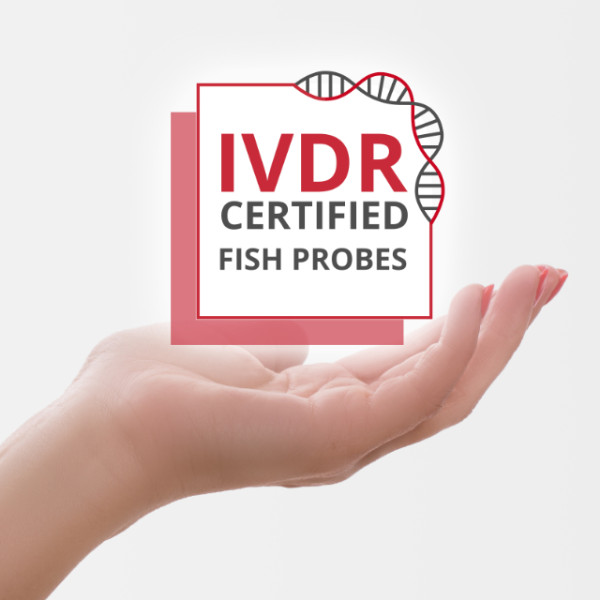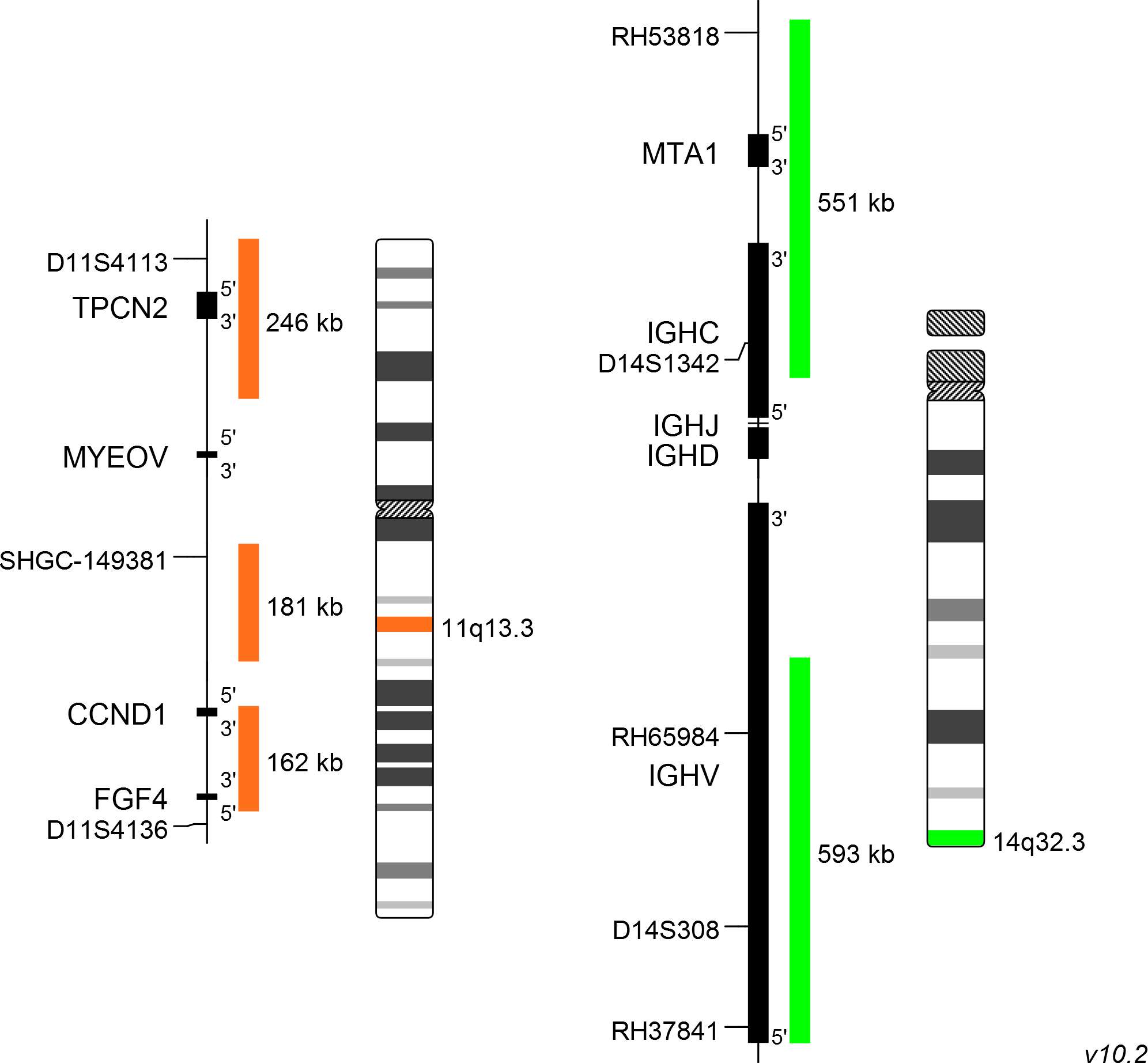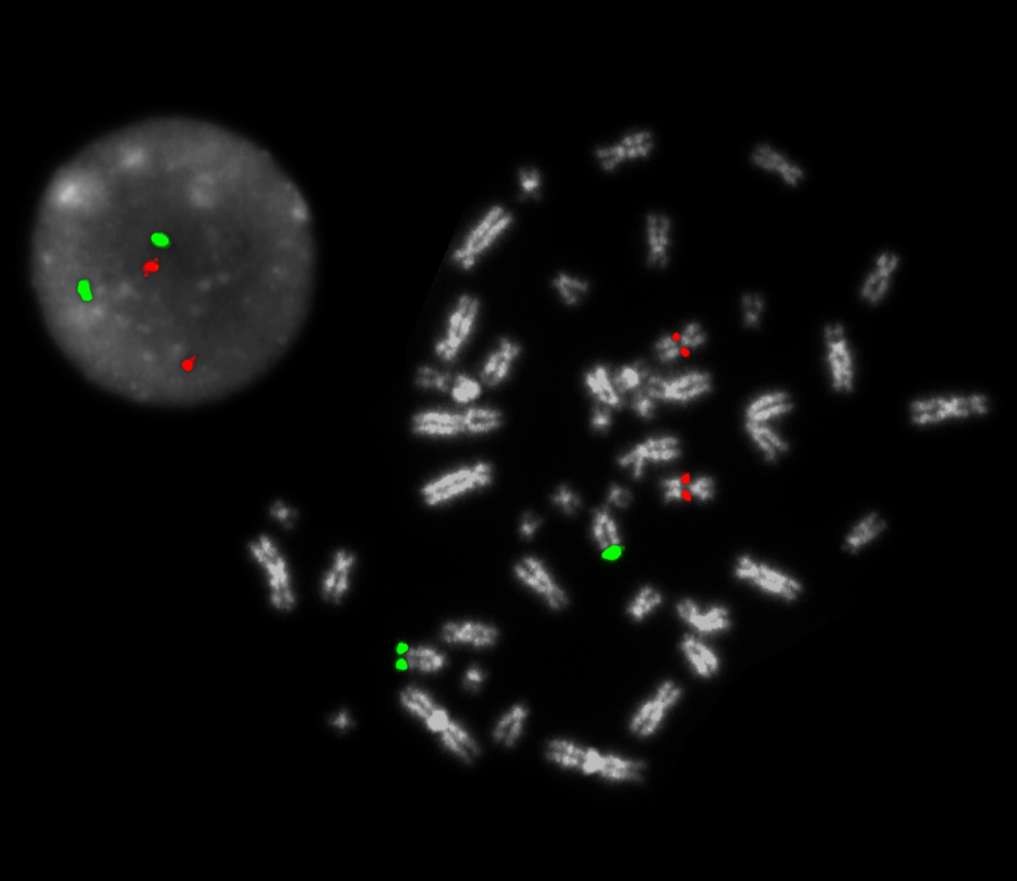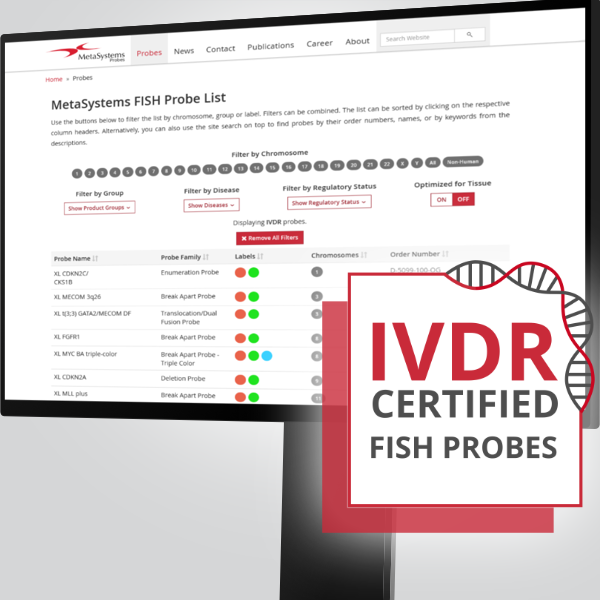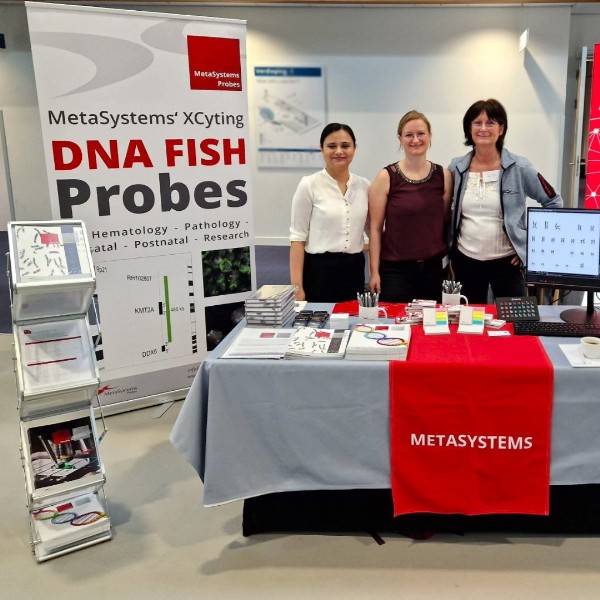Mantle cell lymphoma (MCL) is a B-cell non-Hodgkin lymphoma (NHL) with an aggressive clinical course. It is genetically characterized by t(11;14)(q13;q32) which is present in about 95% of MCL patients. By lower frequency, t(11;14) is also detectable in B-cell prolymphocytic leukemia, myelomas and chronic lymphocytic leukemia. The translocation induces overexpression of CCND1 which is normally not detected in B lymphocytes. CCND1 is a major player in cell cycle regulation and involved in the G1/S-phase transition. The oncogenic potential of CCND1 overexpression is related to its role in the cell cycle but also to other, non-cell cycle-related mechanisms such as increased genomic instability and cell survival. t(11;14) is considered as a primary event, often followed by secondary chromosome alterations.
In multiple myeloma (MM), t(11;14) is the most common translocation, detectable by FISH in about 15-20% of all MM patients. Conventional cytogenetics has a much lower sensitivity, detecting t(11;14) in about 5% of MM patients. MM t(11;14) patients do have a relatively favorable outcome compared to other recurrent IGH translocations.
Clinical Applications
- Non-Hodgkin Lymphomas (NHL)
- Multiple Myeloma and Plasma Cell Neoplasms (MM)
- Chronic Lymphocytic Leukemia (CLL)
